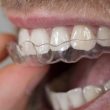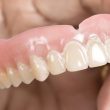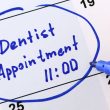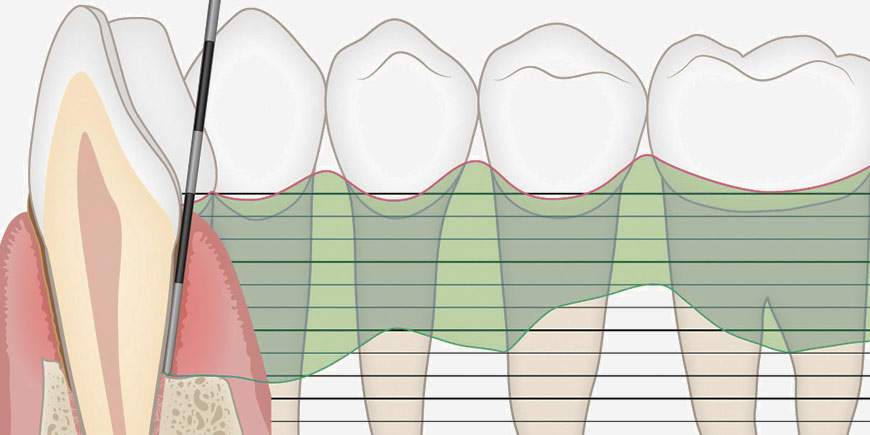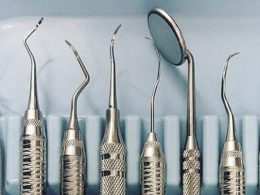Table of Contents
Gingivitis and periodontitis are two words you will never want to hear from your Dentist. Let’s see why!
On their own, their unpleasant names are enough to scare anyone who wants to walk out of their next dental check-up with a certificate of good health, but at the same time, they can encourage you to brush and floss more often and carefully. But what is the difference between these two common dental diseases?
Gingivitis is inflammation of the gums and generally precedes periodontitis, which is the leading cause of tooth loss in adults. For patients diagnosed with gingivitis, the thing is not so serious. Not all gingivitis progress to periodontitis.
The major difference between the two is that gingivitis is reversible, while periodontitis is not.
Gingivitis: Reversible Inflammation of the Gums
In the early stages of gingivitis, dental plaque (which contains bacteria) accumulates on the surface of the teeth. The gums become inflamed and bleed easily during tooth brushing. Although the gums may be irritated, the teeth still remain firmly anchored to the bone. The most common signs of gingivitis are red and swollen gums or gums that bleed easily during brushing.
The good news: no irreversible bone damage has occurred at this stage. Gingivitis is the mildest form of gum disease.
But just like a 5-year-old car that has never had the oil changed, the long-term prognosis for your oral health is poor when gingivitis is not treated on time. If not done, it can progress to periodontitis. Gingivitis is a clear warning sign that our gums are diseased and that we must be more proactive about our oral and general health.
Good oral hygiene habits like brushing your teeth three times a day, flossing and mouthwash daily, and regular dental check-ups can help prevent and reverse gingivitis.
Periodontitis: Infection of the Supporting Bone Causing Permanent Damage
When periodontitis develops, the inner layer of the gums and bone separate from the teeth and form periodontal pockets or pathological sacs. These small spaces between teeth and gums collect debris and can become infected. The body’s immune system fights the bacteria as plaque grows and spreads below the gum margin.
The fight of our immune system to save our gums is not easy. The toxins and poisons produced by the bacteria in plaque combine with our body’s “good” enzymes, involved in fighting infection, to weaken and destroy the bones and connective tissue that hold teeth in place. The pockets deepen and even more bone and gum tissue is lost.
In this advanced stage of gum disease (also known as advanced periodontitis), the teeth are no longer well anchored in place. Teeth loosen and often fall out.
Symptoms of periodontitis include inflammation, redness, receding and constant bleeding of the gums, pain when chewing, displacement of the teeth, bad breath, and the presence of obvious gaps between the teeth and the gums. At this point the situation is already serious, and you should consult your Dentist or Periodontist as soon as possible.
A Worldwide Oral Health Crisis
In the United States, to cite just one example, periodontitis is the number 1 enemy of the oral health of its population. As Crest reports, 24 million Americans have lost more than 6 teeth to tooth decay or gum disease, and 12 million have lost all of them. A 2018 report from the Journal of Dental Research found that gum disease affects nearly half of all Americans over the age of 30. That statistic means that nearly 65 million Americans are battling periodontal disease.
Gum disease is something people experiencing symptoms of cannot afford to put off or leave unattended, because untreated periodontitis rarely gets better on its own, and almost always, it kills your teeth.
How Can You Tell If You Have Gingivitis or Periodontitis?
Here are some tips to detect these diseases early:
- Age Periodontitis is rare in adolescents, but its incidence increases in direct proportion to the age of the people. Gingivitis is common at any stage of life.
- Pain Pain when chewing can be a sign that your periodontal disease has progressed from gingivitis to periodontitis.
- Tooth Mobility If you have gingivitis, your teeth will be firmly in place, even though your gums are irritated, red, and inflamed. If one or more teeth are loose and moving, you most likely have periodontitis.
- Breath If your gingivitis has progressed to periodontitis, you may notice that you have persistent unpleasant breath due to the presence of excess bacteria in your mouth.
We insist, if you experience any symptoms of gum disease, it is imperative that you call your trusted Dentist. He or she will examine your teeth and confirm the diagnosis. If caught early, periodontitis can be controlled with a thorough dental cleaning and oral care routine at home.
Remember, an early diagnosis of gingivitis or periodontitis is not a death sentence for your teeth, but we must take it as a wake-up call to save them. The most useful and intelligent thing is to prevent a simple gingivitis from progressing and becoming an aggressive periodontitis
In our clinic we examine patients for signs of periodontal disease every 6 months, during their regular check-ups. If you have had any symptoms like bad breath, bleeding, or gum tenderness, watch out!
What Are the Risk Factors for Periodontal Disease?
There are a number of factors that increase your chance of developing gingivitis and periodontitis and make them more likely to progress. Well-known risk factors include poor oral hygiene, diabetes, immune diseases, stress, dental crowding, malocclusions, and; one of the most important, smoking:
- Smokers are significantly more likely to develop periodontitis than non-smokers.
- Periodontal treatments (such as gum/bone grafts and implants) are less successful in smokers than non-smokers due to poorer healing.
- Periodontitis progresses much faster, with more rapid tooth loss, in smokers.
- Of cases of periodontitis which does not respond to treatment (refractory periodontitis), about 90% are in smokers.
What Can You Do to Prevent Gum Diseases?
Periodontal disease is not inevitable. The development of gingivitis and periodontitis can be prevented by adopting good oral hygiene habits, visiting your Dentist regularly, maintaining good general health and avoiding cigarettes.
The basic elements of a good oral hygiene regime are:
- Clean the chewing surfaces and the lateral surfaces of the teeth two or three times a day, with a toothbrush (of adequate size and in good condition) and toothpaste.
- Clean the spaces between the teeth, where the brush bristles cannot reach, using dental floss, an interdental brush or an oral irrigator (Waterpik), depending on the size of the space. This should be done once a day, preferably in the evening before going to bed.
Dental floss should be used where the teeth are close together, with little or no space between them, while interdental brushes are suitable for larger gaps. Special care should be taken to clean thoroughly around crooked or crowded teeth, or around fillings, crowns and dentures, as plaque accumulates readily in these places and access might be complicated.
“Antibacterial Mouthwashes Are a Useful Adjunct to Brushing, as They Inhibit Bacterial Growth and Prevent Inflammatory Reactions”.
DENTAL TIP
They should be used after tooth brushing.
If, as a result of an incorrect cleaning technique, plaque deposits remain adhering to the teeth, these will mineralize and turn into solid deposits (calculus, commonly known as tartar) that cannot be removed by the toothbrush.
Your Dentist or Periodontist will identify these tartar deposits during regular checkups and remove them as part of a professional dental cleaning. Once the deposits are removed, the teeth are polished with special pastes and cups to create a smooth surface that is less susceptible to plaque build-up.
Dentistry in Venezuela: A Lifesaver for Millions of People
In many countries of the world the vast majority of people do not have private health insurance and Dentistry has become prohibitively expensive for most of its citizens and residents. This has led many patients to delay, or even to rule out, their oral rehabilitation, seriously compromising their well-being and quality of life.
However, fortunately things have changed, the world has become global, information is easy to access and travel is very cheap. If you face an economic barrier, dental tourism is a great opportunity that will allow you to save up to 70% and immediately access a type of service reserved for very few in your country. The difference is almost always of thousands of dollars or its equivalent, and simply; it may be your lifesaver on the journey to your new smile.
Give yourself a chance, contact us as soon as possible and check that in DENTAL VIP you will be able to easily get the treatment you want and deserve.


